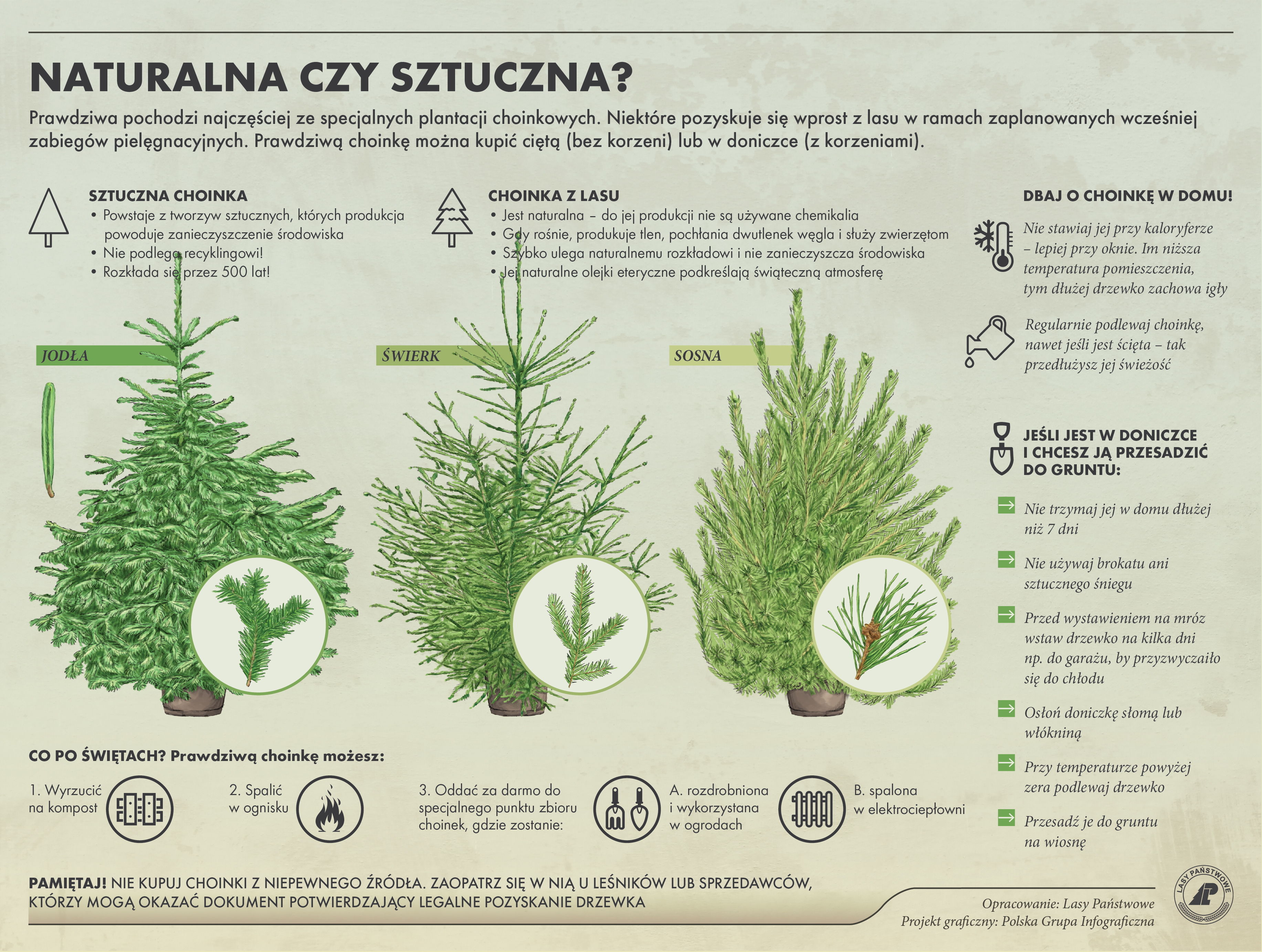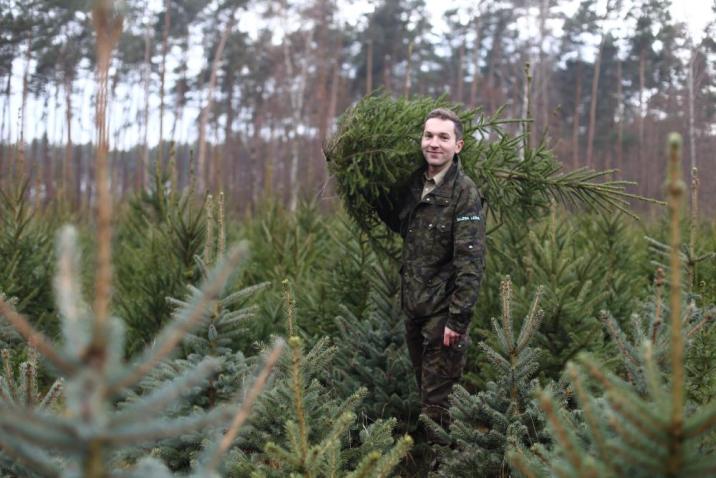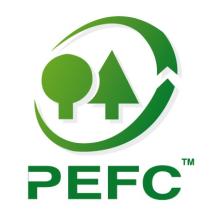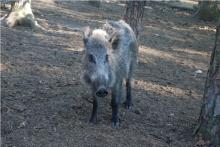 Asset Publisher
Asset Publisher
Polish forests
Poland is in the European lead, while concerning the area of all forests. They cover about 29,2 % of the country territory, and grow within the area of 9,1 million hectares. The overwhelming majority of the forests is state owned, of which almost 7,6 million hectares are managed by the State Forests National Forest Holding..
The number of Polish forest is still growing. The forestation rate of the country has increased from 21 % in 1945 to 29,2 % at the moment. Between 1995 and 2008, the forest area increased by 310 thousand ha. The basis for afforestation works is the "National Programme for Increasing the Forest Cover" (KPZL), assuming an increase of the forestation rate up to 30 % by 2020 and up to 33 % by 2050. Polish forests abound in flora, fauna and fungi. 65 % of the total number of animal species live there.
The forests grow in our country on poor soils, mainly because of the development of the agriculture in previous years. It influences the distribution of the types of the forest sites in Poland. Over 55 % of the forest areas is covered with coniferous forests. In other areas, there are forest sites, mainly the mixed ones. Their small part constitute alder and riparian forests – not more than 3 %.
In the years 1945 – 2011 the area of natural deciduous tree stands within the area of the State Forests National Forest Holding increased from 13 to 28,2 %.
Within the lowlands and uplands the most often occurring tee species is pine. It covers 64,3 % of the forest area of the State Forests National Forest Holding and 57,7 % of private and commune forests. In the mountains the predominant species is European spruce ( in the west) and European spruce with beech (in the east). Domination of pine is the result of carrying on sustainable forest management in the past. Once, the monocultures (crops or cultivations of one species) were the answer to the great demand of industry for wood. Such forests appeared to be quite fragile to climatic factors. They also were often the prey of pests' expansion.
In Polish forests, the share of other tree species, especially deciduous trees have been systematically increasing. The foresters have stepped aside from monocultures – that is why, they try to fit specific species of the forest stand to the natural stand, that would be proper for the given area. Thanks to that, in the years 1945 – 2011, the area of the deciduous tree stands within the lands of the State Forests National Forest Holding increased from 13 to 28,2 %. There occur more and more frequently the following tree species: oaks, ashes, maples, sycamore maples, elms, but also birches, beeches, alders, poplars, hornbeams, aspens, tilias and willows.
Our forests are the most often represented by the forest stands aged 40 to 80 years. The average age of the forest equals 60 years. More and more trees are of big size at the age over 80 years. Since the end of the Second World War, the forests' area has increased up to almost 1,85 million hectares.
Raport o stanie lasów w Polsce 2012
 Asset Publisher
Asset Publisher
Choinki prosto z lasu
Choinki prosto z lasu
Tradycja ubierania świątecznego drzewka towarzyszy nam stosunkowo od niedawna, a nowy zwyczaj przywędrował od naszych zachodnich sąsiadów w czasie zaboru pruskiego. Nie da się ukryć, że ubieranie choinki dostarcza ogromnej frajdy i dużym i małym. Przystrojona w autorskie ozdoby i błyszczące bombki choinka zostaje z nami zazwyczaj przez kilka tygodni umilając nam zimowe wieczory. Zanim jednak zaczniecie ubierać drzewko, zastanówcie się jaką choinkę wybrać? Prawdziwą czy sztuczną?
Dla leśników wybór jest oczywisty. Najlepsza choinka to ta prosto od leśnika. Żywe drzewko ma wiele zalet. Przede wszystkim jest w 100% ekologiczne oraz odnawialne - przetwarza się je po Świętach na nawóz organiczny. Dodatkowo decydując się na choinkę prosto z lasu dostajemy gratis piękny zapach i aromat, który wypełni cały dom.
Z kolei do produkcji sztucznych drzewek najczęściej używany jest polichlorek winylu, a wykonane z niego choinki po wyrzuceniu na wysypisko będą rozkładać się setki lat. Zatem choć sztuczne choinki wyglądają coraz ładniej i mogą służyć kilka sezonów, żywa choinka jest zdecydowanie lepszym rozwiązaniem!
Najbardziej intensywny zapach wydziela świerk pospolity i sosna pospolita. Świerk ze względu na piękny pokrój jest najbardziej popularnym drzewkiem świątecznym. Dodatkowo w łatwy sposób powiesicie na nim wiele ozdób. Przy każdym dotknięciu gałązek będzie Wam towarzyszył przyjemny żywiczny zapach. Niestety świerk ma również wady. Jego igły opadają niezwykle szybko, dlatego wybierając ten gatunek drzewa, pamiętajcie o solidnym podlewaniu.
Sosna pospolita poza Śląskiem nie jest zbyt często wybierana, ale ten kto choć raz się na nią zdecydował wie, że jej intensywnego, żywicznego zapachu nie da się niczym zastąpić. Sosnowa choinka najpiękniej wygląda ubrana w rustykalne samodzielnie przygotowywane ozdoby. Sosna jest niezwykle wdzięcznym drzewem, która spełni oczekiwania najbardziej wymagających osób. Wybierając to drzewko zyskujemy oryginalną i niepowtarzalną choinkę.
Zdecydowanie najdroższym i nieco trudniej dostępnym rozwiązaniem jest jodła. W sprzedaży najczęściej dostępna jest jodła kaukaska, która ma piękny pokrój i długo utrzymujące się igły, ale nie pachnie już tak pięknie jak świerk czy sosna. Jodłę możemy wybrać, jeśli w domu mamy małe dzieci i nie chcemy żeby skaleczyły się igłami.

Leśnicy odpowiadając na zapotrzebowanie na prawdziwe drzewka zakładają specjalne plantacje, na przykład tam gdzie nie może powstać las np. pod liniami wysokiego napięcia. Następnie w okresie przedświątecznym organizowane są kiermasze na terenie nadleśnictw, oferujące piękne żywe choinki. Choinkę najlepiej zakupić w najbliższym nadleśnictwie. Każdy, kto kupi drzewko u leśniczego otrzyma dowód sprzedaży, czyli asygnatę. Wówczas mamy pewność, że drzewko pochodzi z legalnego źródła i zostało pozyskane z poszanowaniem praw przyrody. Świeżo ścięty i codziennie podlewany świerk wytrzyma w naszych domach przez 3 tygodnie nie gubiąc znacznej ilości igieł, a dzięki dużej ilości żywicy zapewni wewnątrz przyjemny leśny zapach.
Nie smućcie się, jeżeli nie wiecie, gdzie najbliżej Waszego miejsca zamieszkania znajdują się leśne plantacje. Od trzech lat, specjalnie dla Was opracowujemy choinkową mapę. Znajdziecie na niej informacje w jakiej lokalizacji i w jakich dniach możecie kupić swoje wymarzone drzewko za naprawdę niewielkie pieniądze. Na mapie znajdziecie również punkty, w których pod nadzorem ale samodzielnie można wyciąć swoją własną choinkę.


 fot. Paweł Fabijański
fot. Paweł Fabijański
 fot. Paweł Fabijański
fot. Paweł Fabijański
 fot. Paweł Fabijański
fot. Paweł Fabijański





